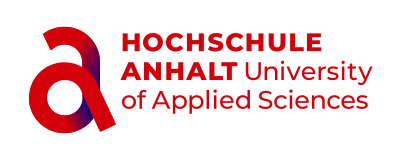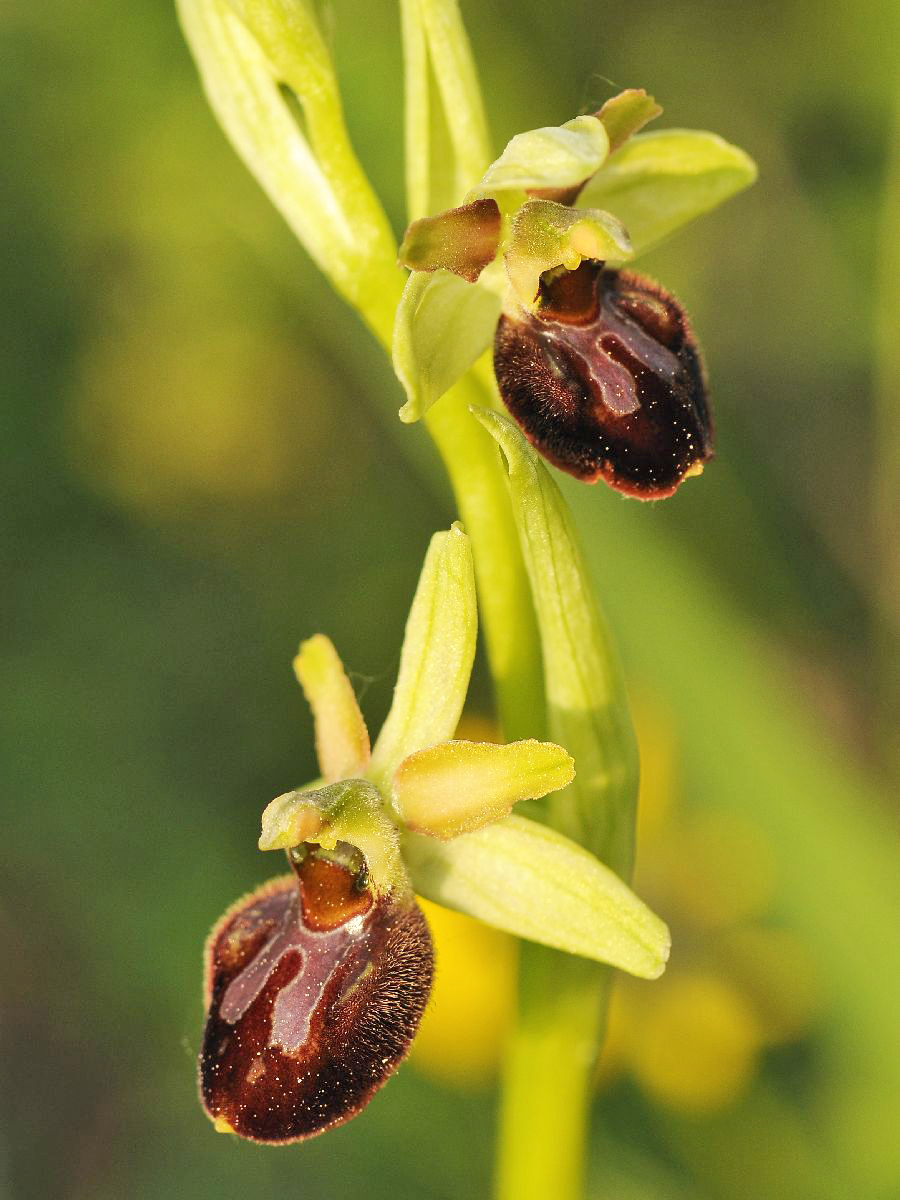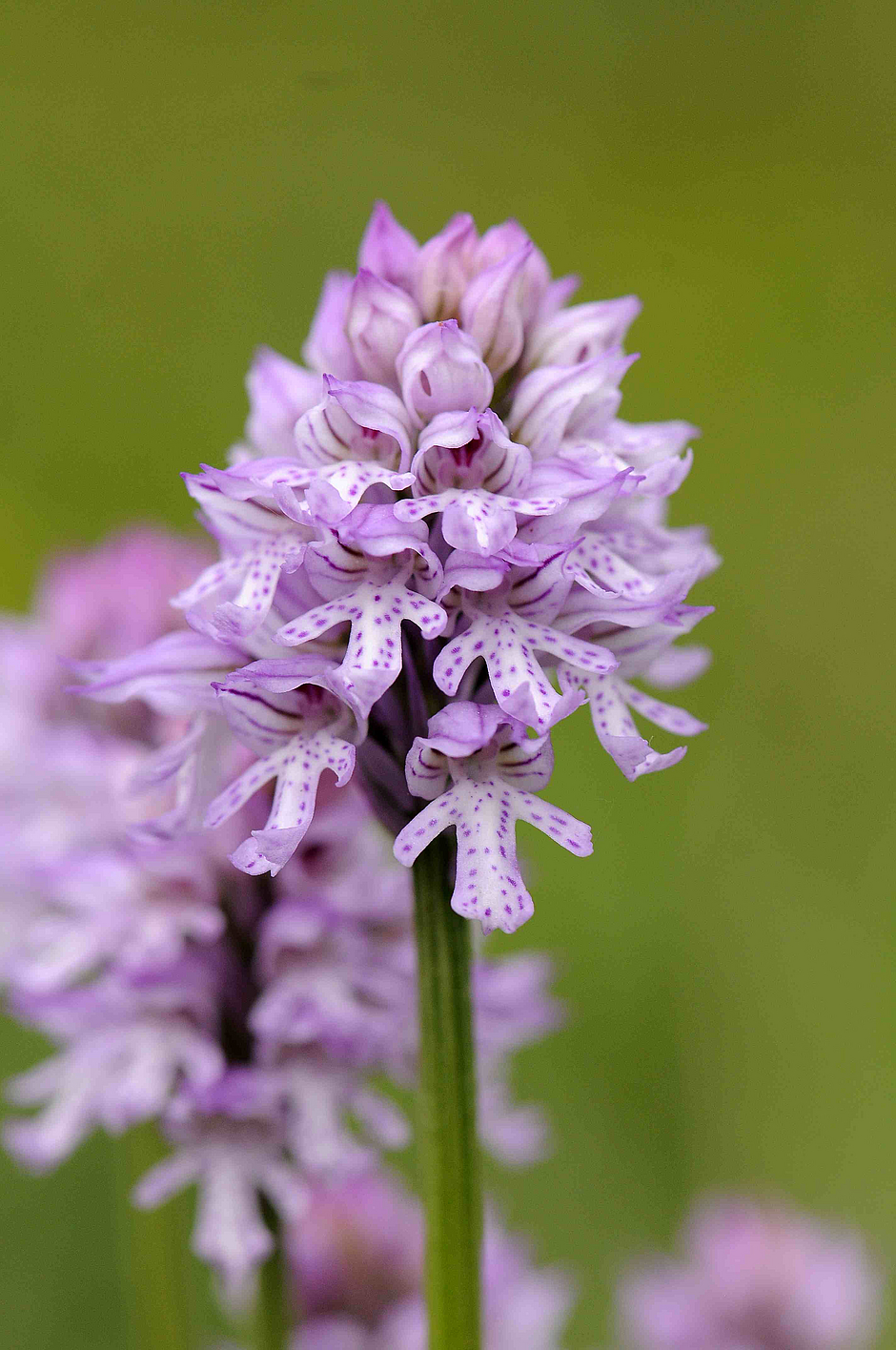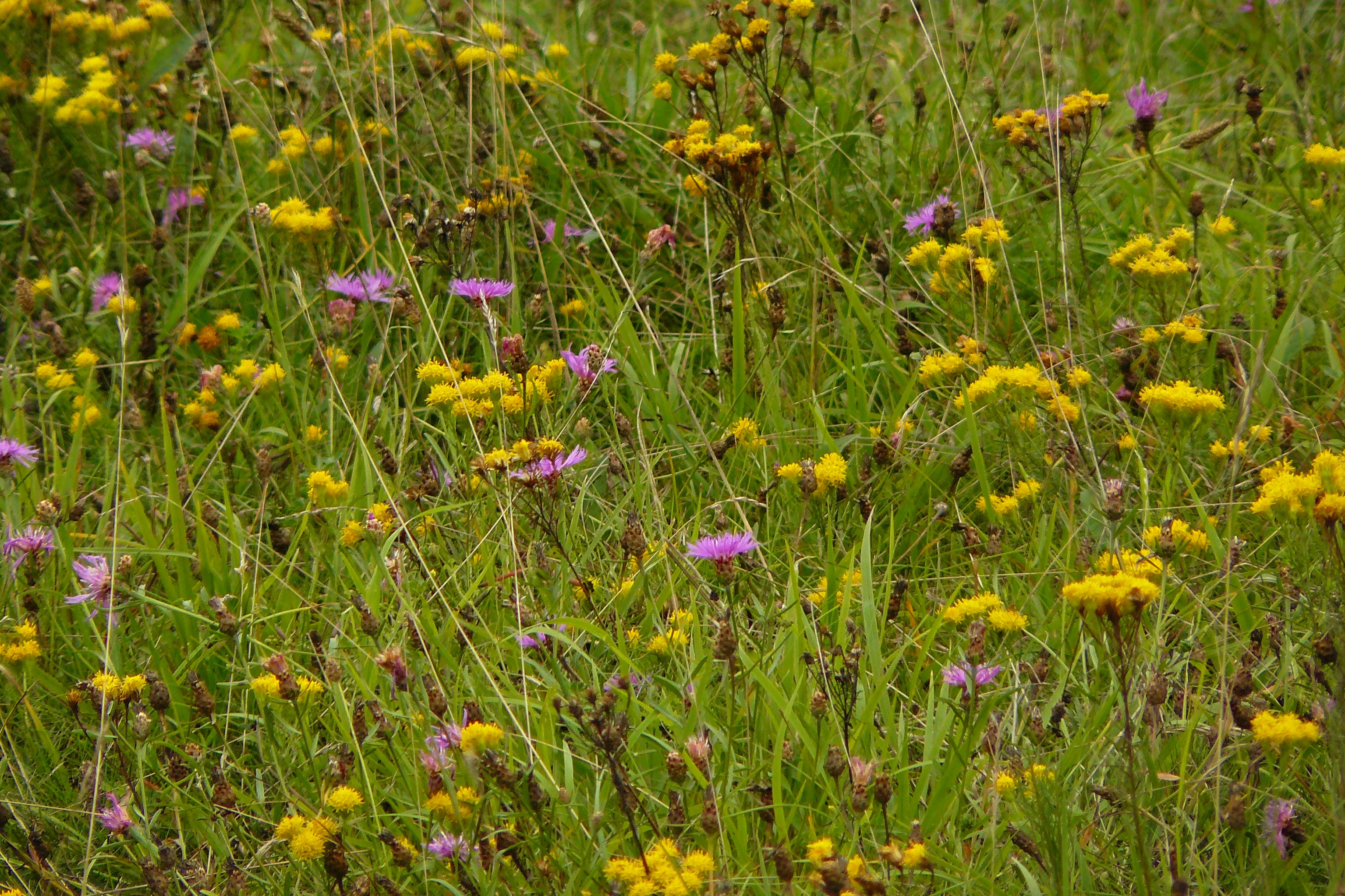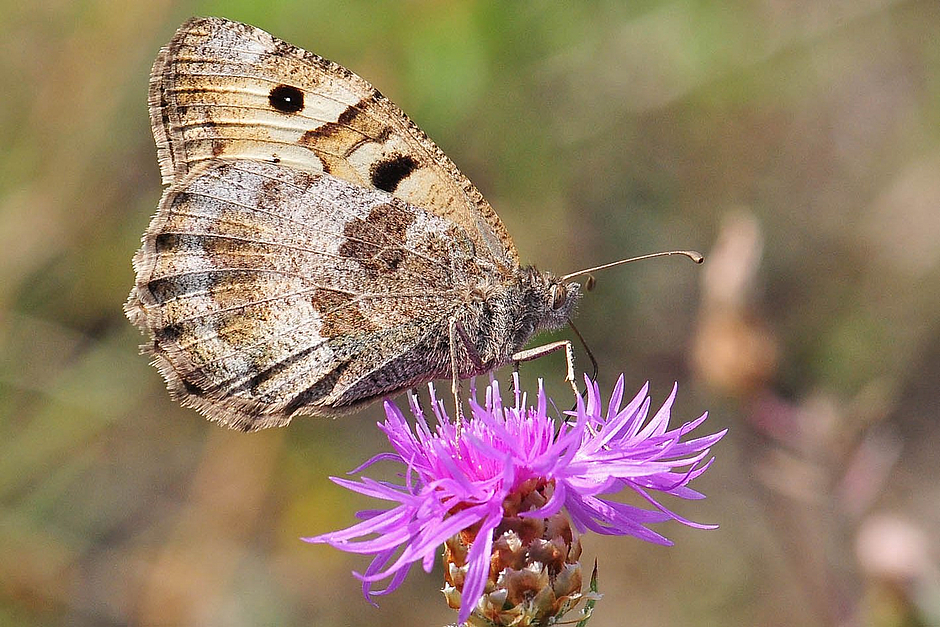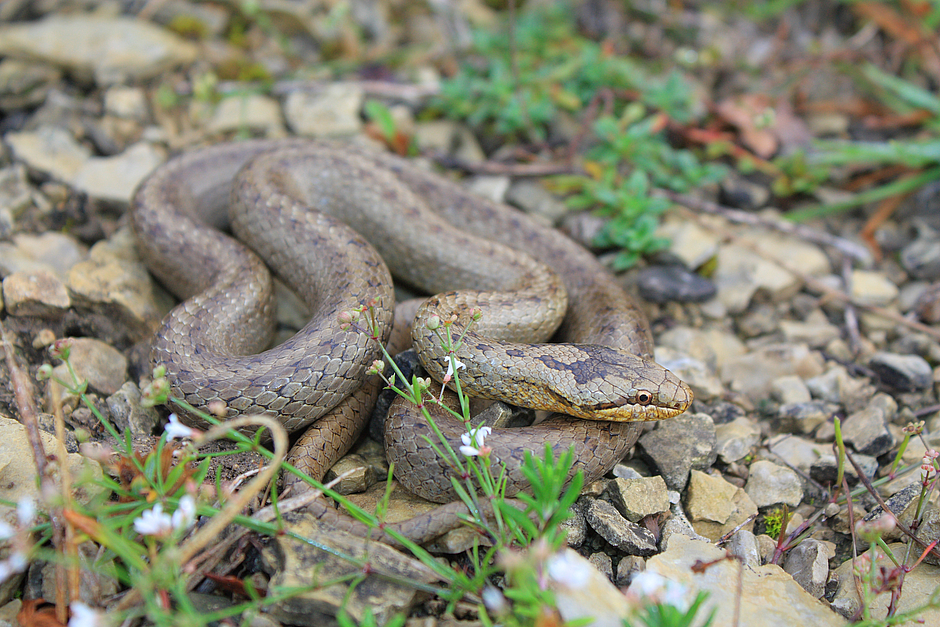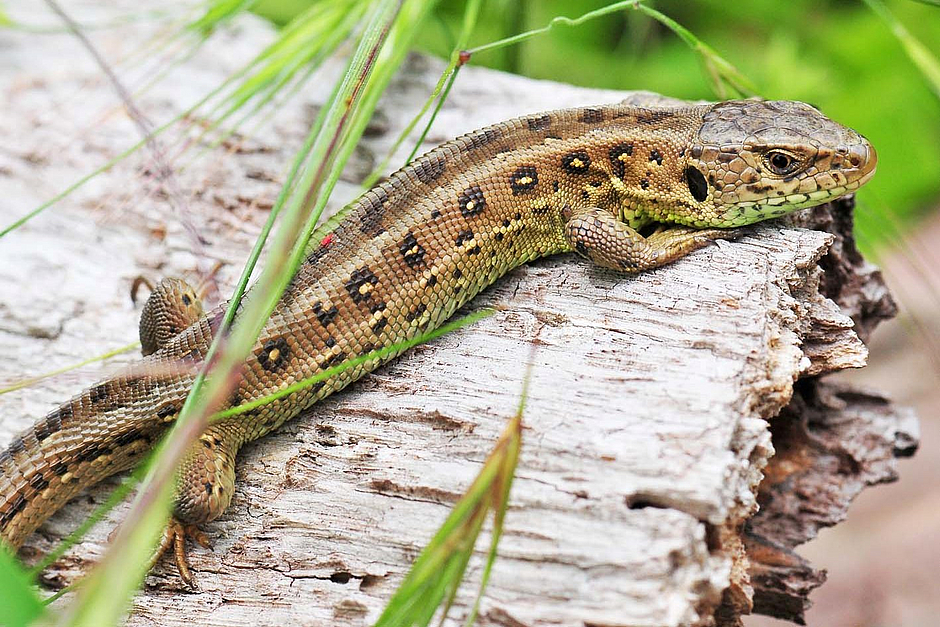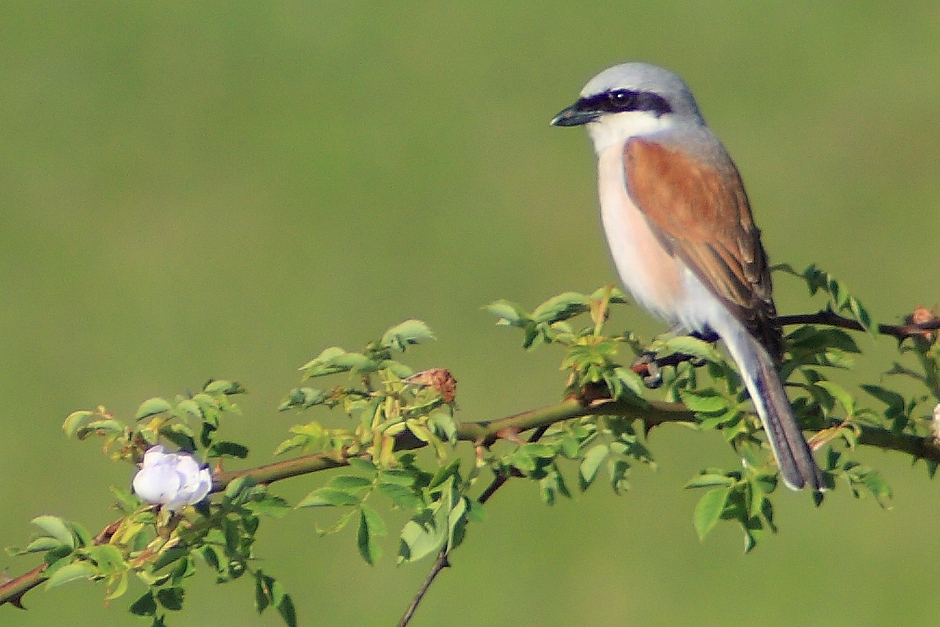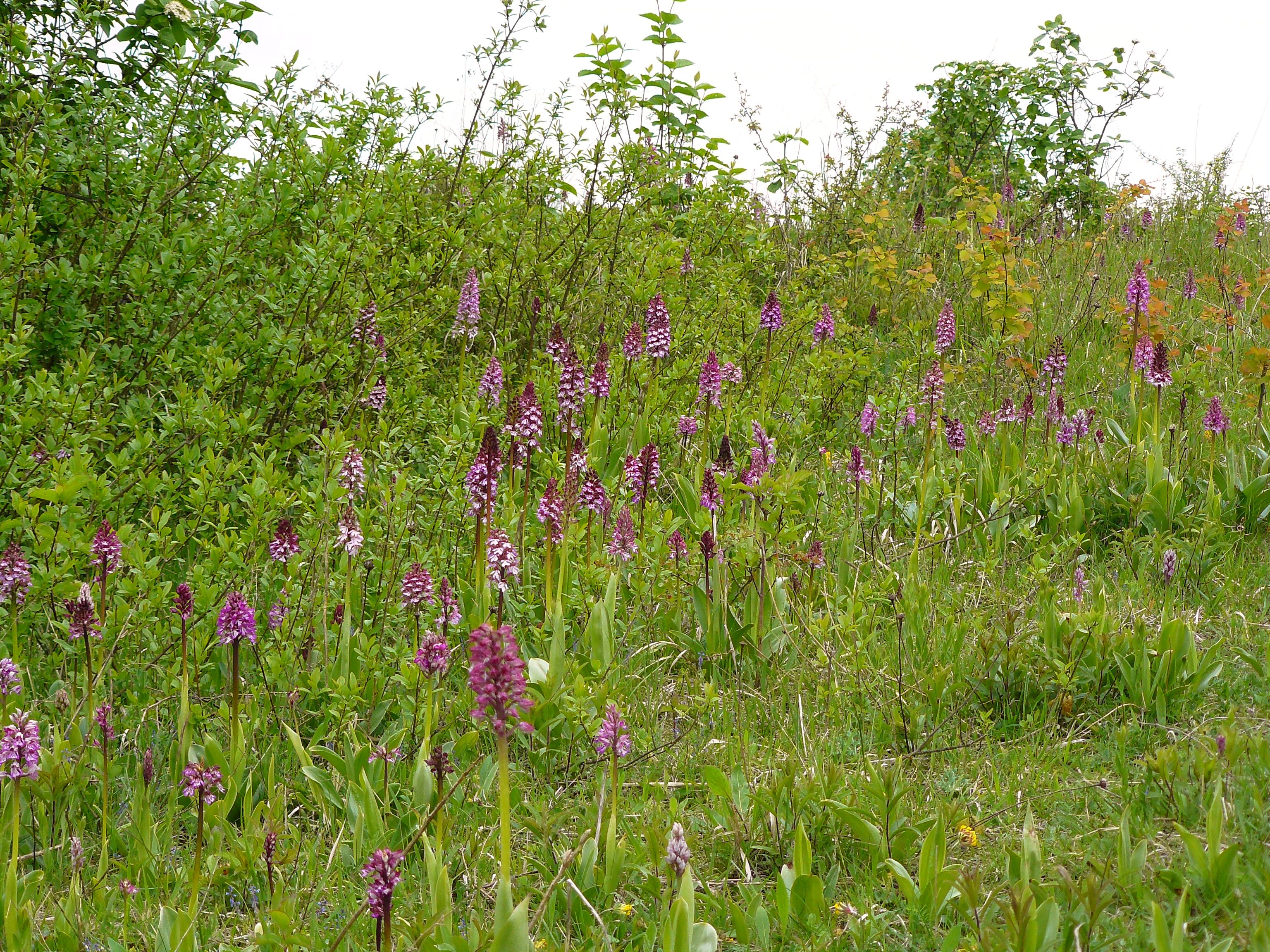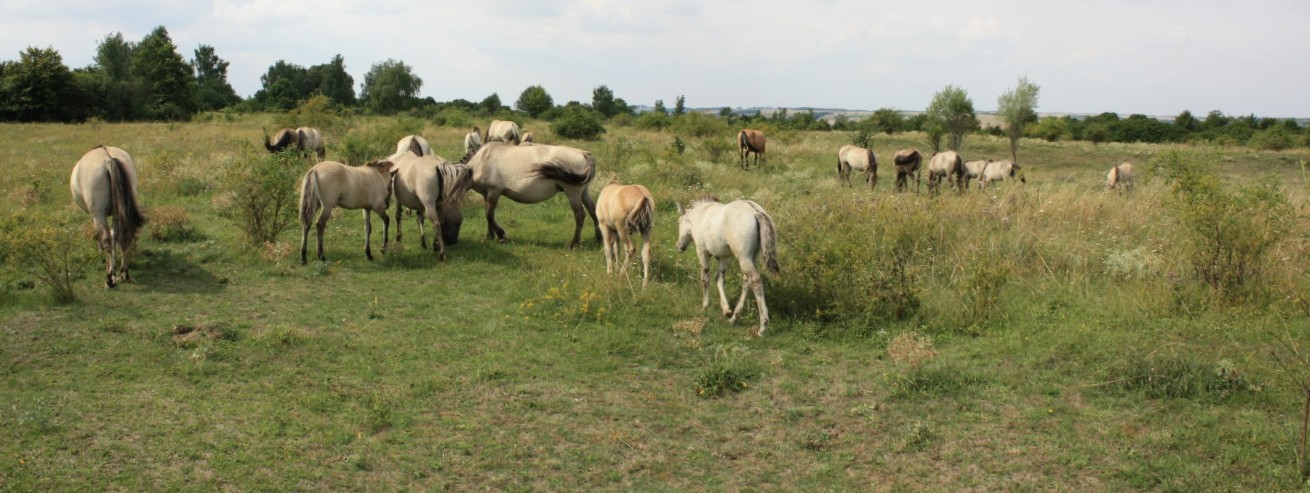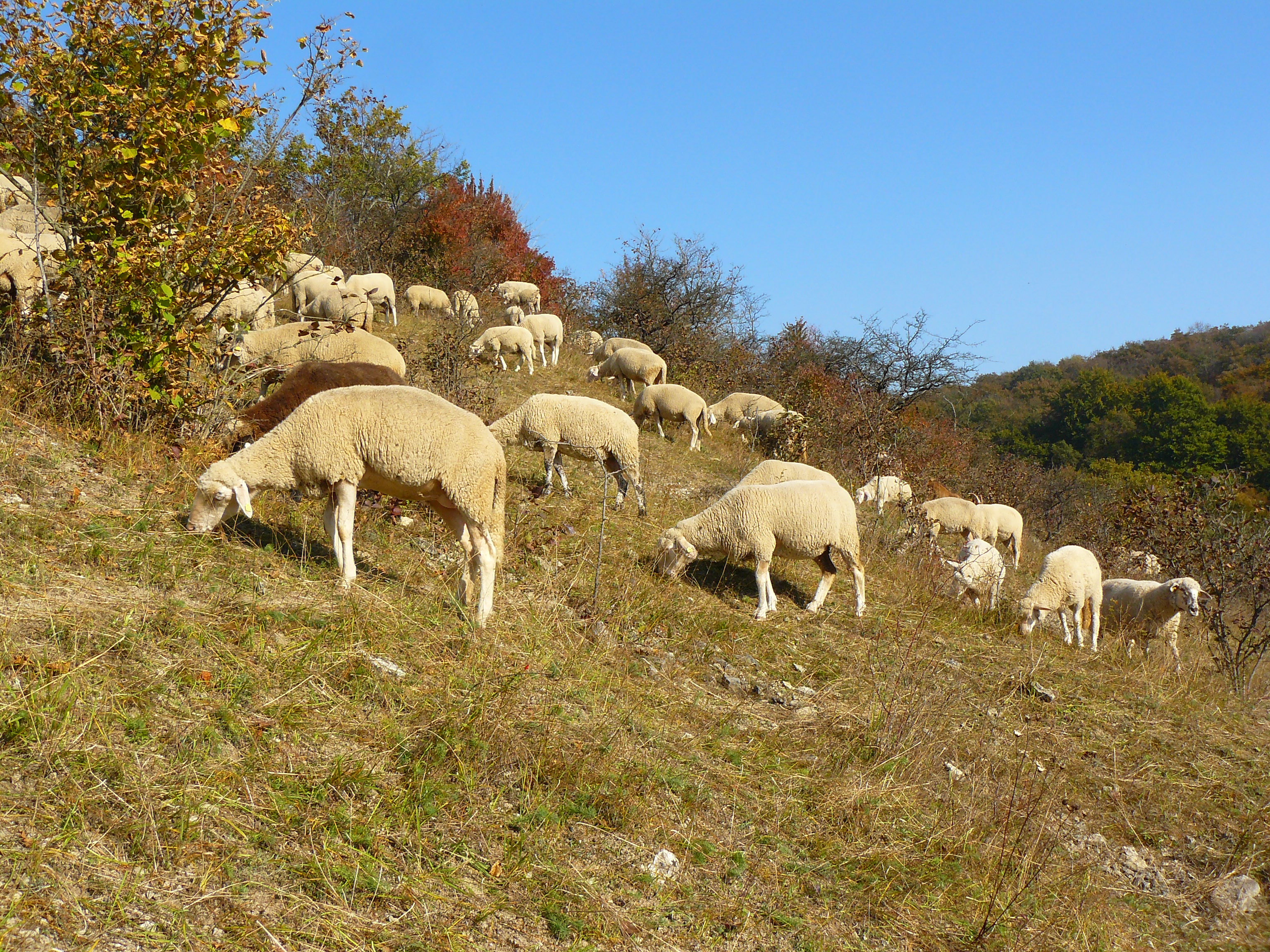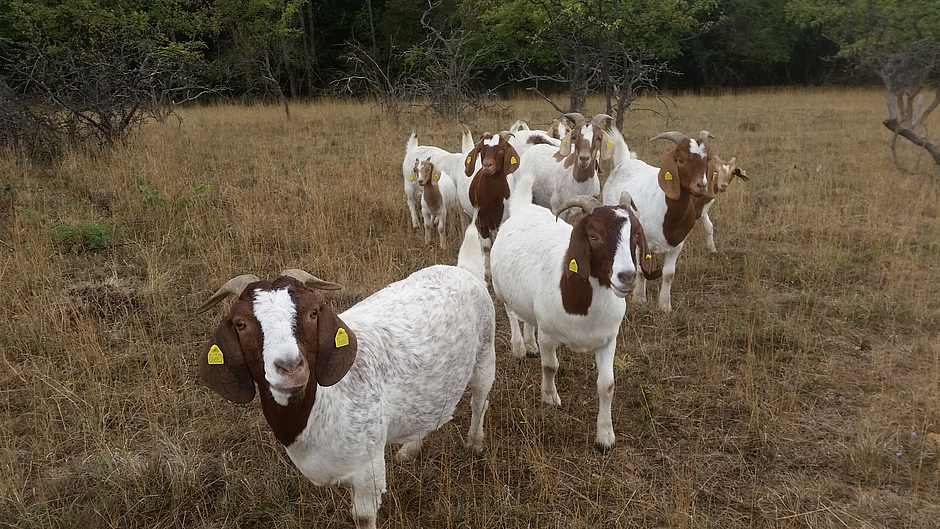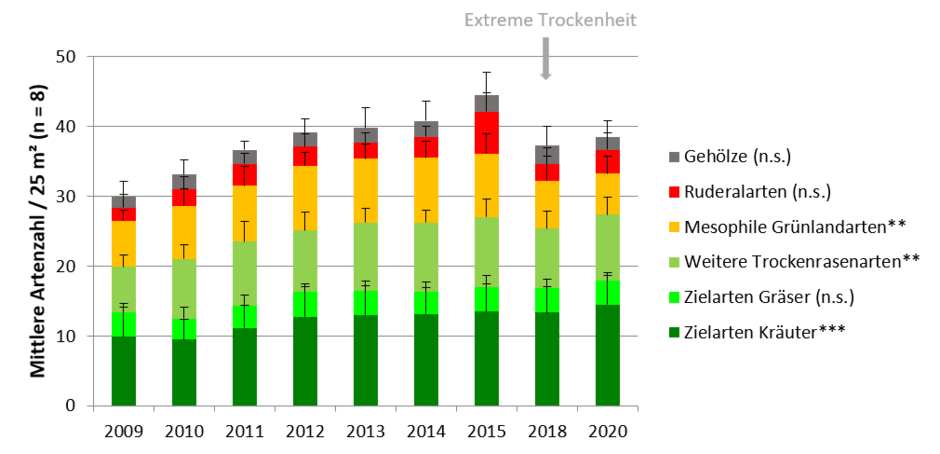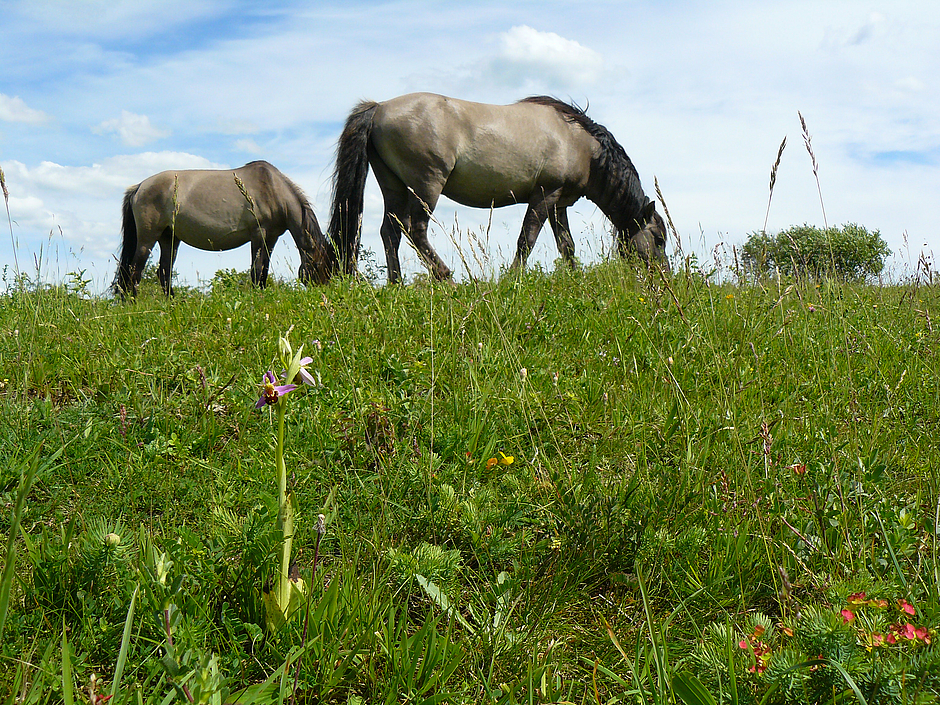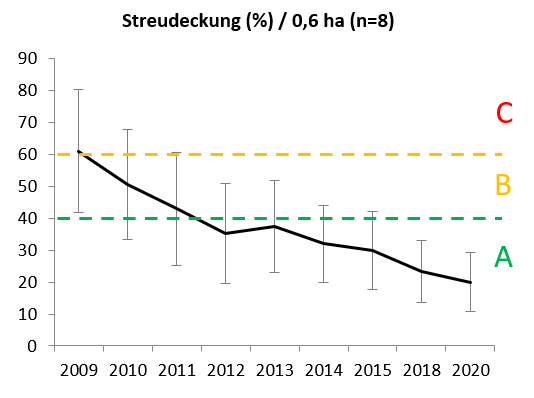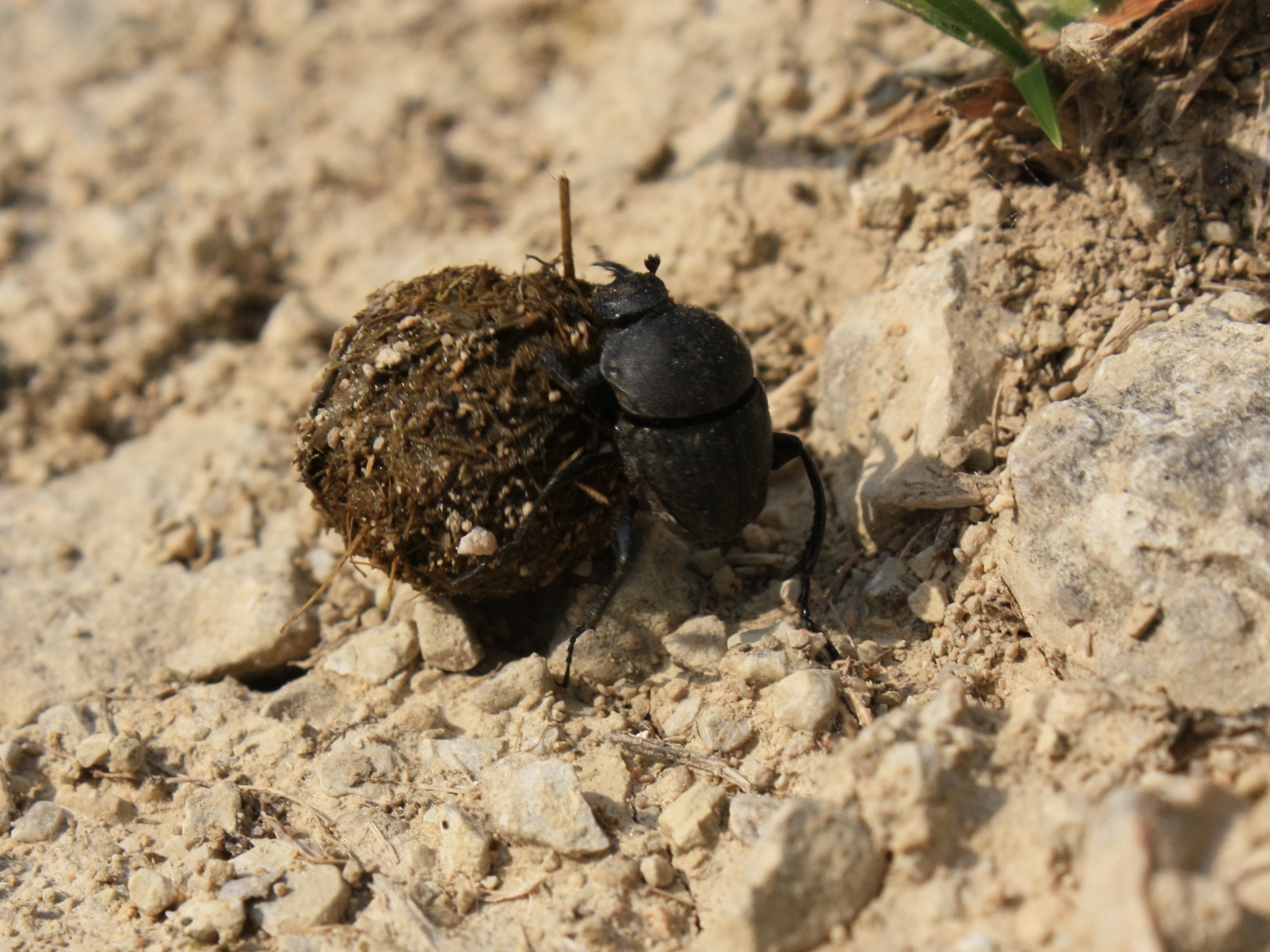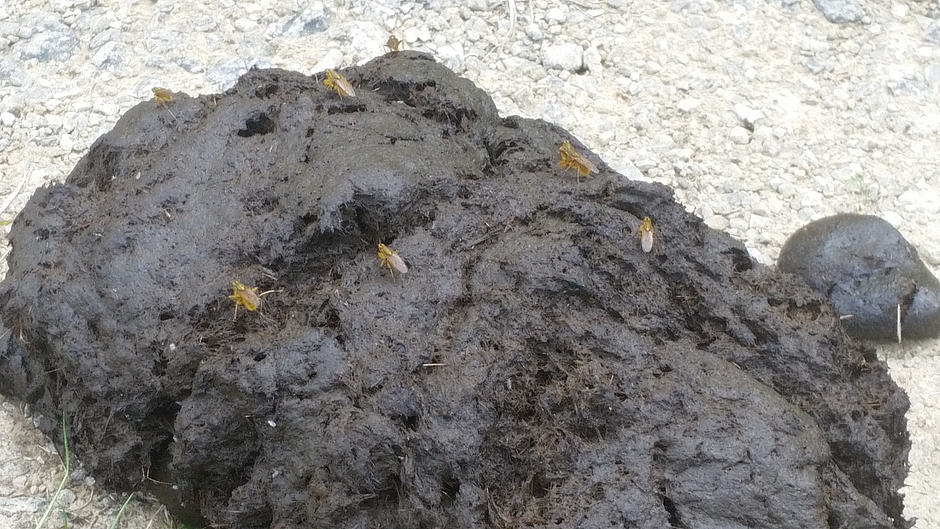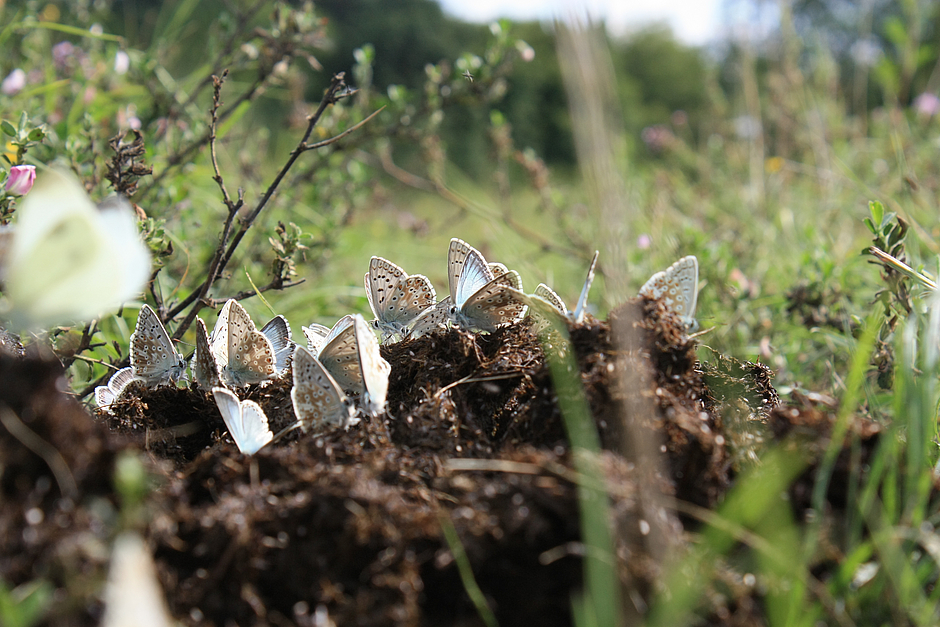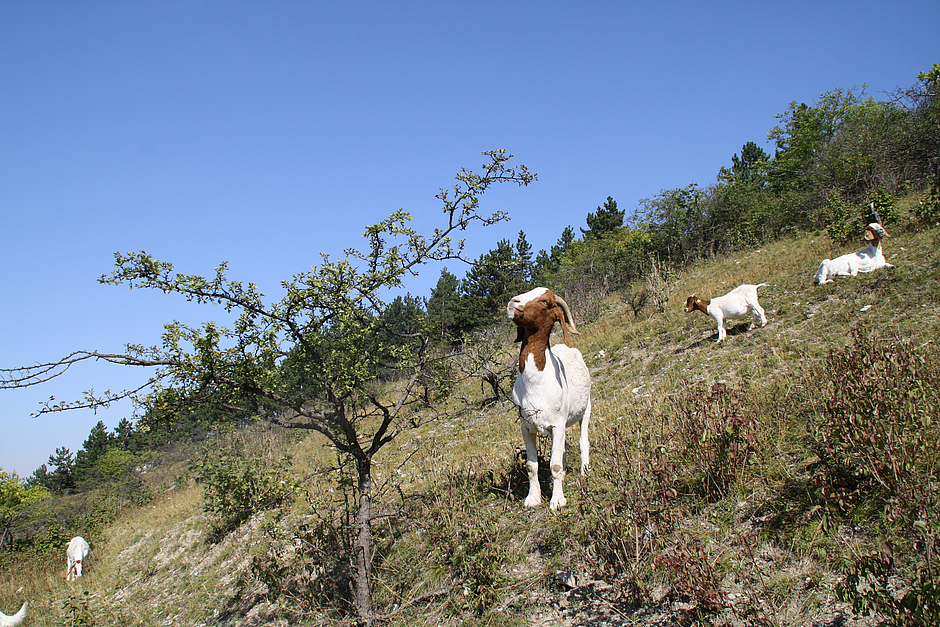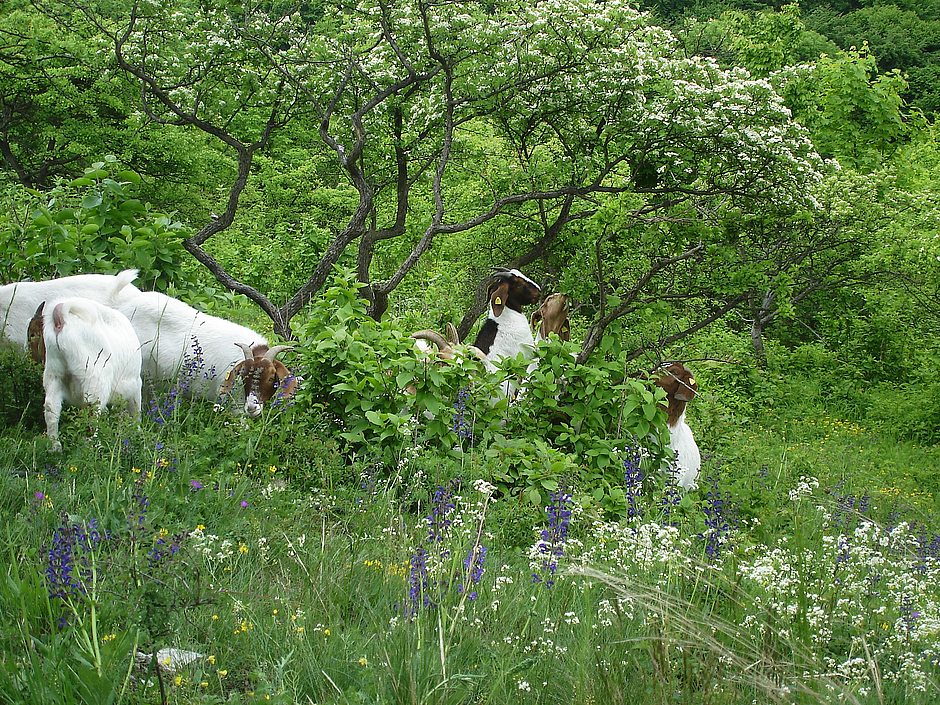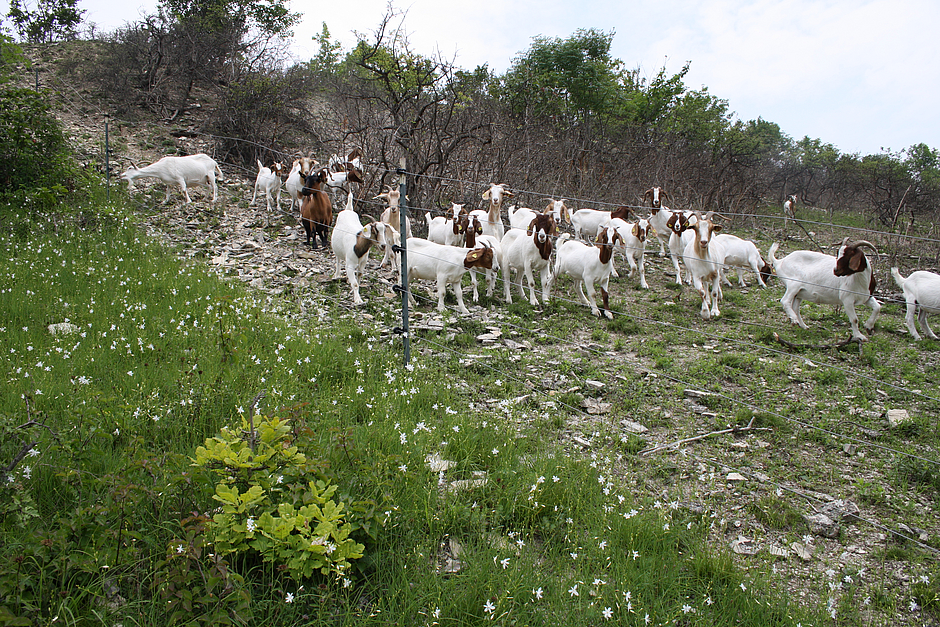The study area: a cultural landscape high in diversity
The study area: a cultural landscape high in diversity
The nature conservation and Natura 2000 area “Tote Täler (südwestlich von Freyburg)” forms a representative part of the arid environment at Saale and Unstrut and is part of the Muschelkalk plateau near Naumburg (southern Saxony-Anhalt). Multiple use of the landscape during the last few centuries such as forestry, grazing, vini- and agriculture, use of fruit trees and limestone mining resulted in the current appearance. The central plateau was used for soviet military purposes until 1992. An open landscape was left where semi-dry grasslands have established. On the hillsides of the plateau, the grasslands are surrounded by semi-natural mesic deciduous forests and dry and semi dry grasslands with submediterranean and continental elements rich in fringe species. The main habitat type is Semi-natural dry grasslands and scrubland facies on calcareous substrates (6210 *). In the area big portions of the states´ precious habitat types occur: 25 % of the habitat type 6210*, 29 % of 6110*, 50 % of 8160*.
Special attention is given to the widely spread orchidrich habitats as important orchid sites. Characteristic species such as Ophrys apifera, O. insectifera, Orchis tridentata, Epipactis atrorubens, and Gymnadenia conopsea occur in rich populations. But also xerothermic woody species like Sorbus domestica or Cornus mas extensively cover the hillsides. Isolated shrubbery of roses (Rosa spp.), hawthorn (Crataegus spp.), and blackthorn (Prunus spinosa) form the semi-open landscape of the central plateau; due to the pronounced dry periods shrub encroachment was low at the beginning of the horse grazing.
The avifauna counts 52 species of breeding birds (16 species of the European Birds Directive, Annex I), the butterflies and moths 71 species (2018). The population of the endangered grasshopper Oedipoda germanica is the third most northern occurrence in Central Europe. In total, 23 grasshopper species occur.
Abandoning of the traditional types of land use has recently increased scrub invasion and vegetation litter endangering the valuable open habitats. In order to maintain and restore a favorable conservation status of the habitat types of Annex I and species of Annexes II and IV of the European Habitats Directive the plateau is grazed by Konik horses and the slopes by goats and sheep.
Pulsatilla vulgaris @Torsten Ruf 
Ophrys sphegodes @Torsten Ruf 
Orchis tridentata @Torsten Ruf 
Spiranthes spiralis @Michael Jung 
Chazara briseis @Torsten Ruf 
Coronella austriaca @Michael Jung 
Lacerta agilis @Torsten Ruf 
Lanius collurio @Michael Jung 
The historical quarry in the north of the Rödel plateau was used in the 13th century to extract limestone for the construction of Naumburg Cathedral. Today it´s an important habitat for species of the Rupicolous calcareous or basophilic grasslands of the Alysso-Sedion albi (6110*) @Michael Jung The open land areas of the NSG have a total number of approx. 470 vascular plant species. In addition to the abundant occurrence of brown-red sitter (Epipactis atrorubens), great two-leaf (Listera ovata), mosquito-handelwort (Gymnadenia conopsea), fly ragwort (Ophrys insectifera), helmet (Orchis militaris) and purple orchid (O. purpurea) in In the ecotonic areas, the open areas of the plateau are flat with a supra-regionally significant population of the bee orchid (Ophrys apifera), which is located in Saxony-Anhalt on its north-eastern boundary. Due to the pronounced dry phases, there was little scrub on the pasture area on the plateau (Rödel) at the start of the project: Individual groups of bushes of roses (Rosa spp.), Hawthorn (Crataegus spp.) And sloe (Prunus spinosa) characterize the semi-open landscape. The dry grassland on the slope areas, on the other hand, was severely endangered by the advanced encroachment. The area has a special responsibility for the conservation of the FFH habitat types that occur: The proportion of FFH-LRTs in the state population is high (25% LRT 6210 *, 29% LRT 6110 *, 50% LRT 8160 *).
The avifauna is significant with 52 breeding bird species (16 species Annex I of the VS-RL), the butterfly and ram fauna with 71 species (as of 2018). A population of the endangered red-winged wasteland insect (Oedipoda germanica) forms the third northernmost occurrence in Central Europe. A total of 23 species of locusts are found in the study area.
Up until 2009, with the exception of the orchid circular route (continuous sheep grazing by Trift), increasing grassing, matting and bushing of the valuable open land areas was observed due to the discontinuation of historical forms of cultivation. In order to maintain and restore a favorable conservation status for the habitat types according to Appendix I and species according to Appendix II and IV of the Habitats Directive, the plateau has been grazed with horses all year round since 2009. Four of the exposed slopes to the south and west of the dry valleys to the side of the plateau have been stocked with goats since 2012 from April to November.

The dry and semi-arid grasslands are acutely endangered by advancing bush encroachment @Georg Hiller Project goals: maintaining and improving the hotspot of biodiversity
Project goals: maintaining and improving the hotspot of biodiversity
The aim of the project is to scientifically monitor the low-intensity year-round horse pasture on the plateau as well as the temporarily used pastures with sheep and goats on the slopes in order to maintain, restore and improve the habitats and species to a favorable conservation status in terms of the habitats directive. The pastures are created to actively maintain the open grasslands. Current analyses of the conservation status are used for detailled management advices.
Additionally, it is intended to raise people´s awareness about nature conservation objectives. Knowledge about the conducted nature conservation measures, and flora, fauna, and habitats of the conservation area is provided especially for the public.
Grazing concepts
Grazing concepts
Year-round horse pasture: In spring 2009, a 87 ha large year-round pasture with horses of the Konik Polski breed was established on the extensive central plateau of the Natura 2000 area. The robust breed is supposed to check further scrub and vegetation encroachment of the overgrown semi-dry meadow in order to potentially increase species diversity. Scrub and vegetation encroachment are especially reduced through winter grazing. Stocking capacity is about 0.1 to 0.3 LU/ ha (ca. 13 adult horses and several foals during summer).
Sheep grazing in summer: Grazing by sheep with a shepherd was occurring on the species-rich hillsides at the Orchideen-Rundweg more or less since 1964 when the nature conservation area was founded. Currently, a shepherd with about 200 sheep is managing the 17 ha large area.
Rotational goat pastures in summer: Beginning in spring of 2012 four slopes (17 ha) with strongly increased scrub encroachment on the dry grasslands are temporarily grazed by two herds of 30 goats (ca. 0.25 LU/ha) in order to reach a more favorable conservation status. The rotational grazing regime on divided compartments enables the adaptation of phenology of endangered plant and especially orchid species.

Konik horses on the Rödel plateau reduce vegetation litter and grass encroachment on the semi-dry calcareous grasslands since 2009 @Michael Jung 
Sheep grazing with a shepherd in late summer and autumn after most endangered species have completed regeneration @Georg Hiller 
Rotational goat grazing on 8 patures from about April to November @Martina Köhler Conservation-related success control and scientific support
Conservation-related success control and scientific support
The influence of the various forms of grazing on the species and their habitats is regularly examined as part of a nature conservation success control. Surveys are carried out on different scales (see also LORENZ et al. 2013).
Spatial scale plane
Indicators
Investigation methods
Landscape level / entire pasture area (87 ha) Area share and distribution of FFH habitat types in open areas Biotope mapping Characteristics of the habitats and biotopes (structural parameters, bee orchids and other orchids) Raster mapping Breeding bird population in open and semi-open areas (key species) Territory mapping (based on SÜDBECK et al. 2005) Grazing animal activity (use of space, feeding behavior) Telemetry, direct animal viewing Habitat type level Parameters relating to the vegetation structure: degree of shrubbery, proportion of signs of grassing, open ground, litter cover, grass-herb ratio Acquisition on 75 mx 75 m macro plots (divided into quarter quadrants) Total spectrum of species, number of species Acquisition on macro plots Species thicknesses of the plant species Vegetation recordings on 25 m2 permanent observation areas Species / species groups level Orchids: population development of the bee orchid, spider orchid, three-tooth orchid, autumn spiral orchid Individual-based recording on 1 m2 permanent observation area four times a year (according to KLEIN 2008) Cross gentian Attempting management variants (early / late mowing, grazing) Autumn Wendelorchis, three-tooth orchid, species thicknesses of other plant species Attempt to keep paddock with sheep versus mowing: individual-based recording, vegetation surveys, analysis of soil parameters Reptiles: Occurrence and frequencies smooth snake, sand lizard Acquisition on the total Pasture area with snake boards, among other things (after HACHTEL et al. 2009) Butterfly / Ram: Occurrence and frequencies Area-wide recordings with standardized recording effort on the macro plots Locust fauna: occurrence and abundance Recording on the macro plots by means of an isolation square (e.g. after SCHLUMPRECHT & WAEBER 2003) Red-winged wasteland insect Capture mark recapture acquisitions The parameters are analyzed for changes using data from the previous year. In the event of a deterioration in the state of conservation, as measured by the indicators, the grazing management is adjusted by changing the stocking size or the time of grazing and, if necessary, supplementary maintenance measures.
Effects of year-round horse grazing

Effects of year-round horse grazing
The analyzes of the use of space by the large grazing animals on the plateau show that the entire pasture area, with the exception of the quarries with little vegetation, is used relatively evenly for feed intake (Fig. 1). Only the marginal areas that are very far away from the central area (including drinking troughs) are used less, but are used in winter with a similar intensity as the central pasture area. Since the observations of the terrain showed a comparatively increased degree of wood bite, especially in the winter months, winter grazing is of decisive importance with regard to the desired effects for keeping the area open. Furthermore, there was no formation of nitrophilic (tall herbaceous) corridors as a result of the formation of latrines. The development of pasture lawns is also distributed like a mosaic over the entire area and its distribution is dynamic.
The habitat-typical species inventory as an elementary component for assessing the conservation status of the FFH habitat type near-natural limestone dry grassland (6210 *) developed positively over the entire grazing period (plateau). From 2009 to 2018, the number of species on the vegetation recording areas increased by an average of 10 species. On the other hand, a trend towards a decrease in the number of species can be seen on the control areas due to the deterioration of the vegetation structure.

Development of the number of plant species within the ecological groups on the 25 m² vegetation recording area; the decline in 2018 is due to the extreme drought. Statistics: Anova with repeated measurements. 
The orchid populations benefit from the year-round, extensive horse grazing on the Rödel; in the foreground the bee orchid (Ophrys apifera) @Georg Hiller A total of 12 species of orchids can now be found on the horse pasture. The orchid species that forms the largest population there is the bee orchid (Ophrys apifera). During the extensive recording of individuals in the leaf rosette state, around 2,700 individuals were counted in 2018. Compared to the data recorded in 2013 (approx. 1,800 individuals), the population increased significantly. No negative grazing effect could be observed in analyzes that correlate the occurrence and development of the bee orchid with the horses' use of space. Rather, there are other signs that the orchid species benefit from horse grazing: Since grazing began in 2009, the orchid species Bock's belt tongue (Himantoglossum hircinum), spider ragwort (Ophrys sphegodes) and three-tooth orchid (Orchis tridentata), which are rare in Saxony-Anhalt, have been on the Rödel ) has reappeared and blossomed.
In addition to the species inventory typical of the habitat, the habitat structures typical of the habitat are decisive for the assessment of the conservation status according to the Habitats Directive. The dominance of polycormon formers and / or tall clump grasses leads to a poor assessment of the characteristics of the lime dry grassland habitat type (6210 *). These stages of grazing were correctly marked on the Rödel by the erect bromide (Bromus erectus), the pinnate twigs (Brachypodium pinnatum) and the oat (Arrhenatherum elatius). Since the beginning of grazing in 2009, there have been significant declines, especially in the case of the upright trespe and the smooth oat.
Accordingly, the litter formation of the herbaceous layer, which inhibits the establishment of less competitive plant species, was halved. The proportion of herbs doubled. The expansive open ground created by the treading action of the grazing animals should be assessed as positive in terms of habitat structures for groups of animals and low-competitive plant species. The initially sparse wood cover increased only slightly. The manure is evenly distributed (average coverage 0.1% per 0.6 ha plot). The availability of untreated dung is of existential importance for many insects. In the normal landscape, pills and dung flies, which have become very rare in the normal landscape, form part of the food base for the bird species that occur on the pastures. The dotted pore disc (Poronia punctata), a dung-colonizing fungus that was considered to be extinct in Saxony-Anhalt, is again numerous on the extensive year-round pastures of the Oranienbaumer Heide and the Dead Valleys.
The unfavorable conservation status (C) of habitat type 6210 * at the start of grazing was exclusively due to the poor development of the habitat structures typical of the habitat (lack of care). Through extensive, year-round grazing with horses, the habitat structures could be returned to a favorable condition (A) and at the same time the species inventory typical of the habitat could be preserved and promoted.


As the analysis of the data from the surveys on the faunistic species groups on the plateau showed, the number of species listed in the Saxony-Anhalt Red Lists (status: LAU 2004) is comparatively high: 6 bird species, 3 grasshopper species, 25 butterfly and ram species . The breeding bird target species woodlark (Lullula arborea), red backed killer (Lanius collurio) and sparrowhawk (Sylvia nisoria) are also species according to Appendix I of the European Birds Directive. Since the beginning of grazing, 18 individuals of the endangered smooth snake (Coronella austriaca) have been recorded and evidence of reproduction has been provided.
The mean species numbers of grasshoppers on the macro plots are 9.6 (2010), 7 (2011) and 10.3 (2012). The mean species numbers of butterflies and rams remain constant at 7.5 (2010), 8.7 (2011) and 8.2 (2012), with the mean number of individuals increasing continuously: 58.2 (2010), 70.2 (2011 ) and 131.7 (2012). The mountain witch (Chazara briseis), which is particularly endangered and worthy of protection throughout Germany, also increased its population significantly.

Matter Pill Roll (Sisyphus schaefferi) @Torsten Ruf 
Dung flies (Scathophagidae) @Martina Koehler 
Sky-blue-blues on untreated horse manure @Michael Jung Effects of extensive goat grazing
Effects of extensive goat grazing
Goats are well suited to transforming dry grass with strongly advanced stages of shrubbery into a more favorable conservation status. As a mixed eater with a split upper lip and facultative bipede, goats cover a large part of their food needs by biting and peeling wood up to a height of 1.80 m. During direct animal observation, the goats bit woody wood 70% of the time. Blood-red dogwood (Cornus sangiunea) and woolly viburnum (Viburnum lantana) in particular were eaten very often. These woody species also made up the largest share of the woody cover on the slopes investigated. Through the goat grazing in spring (“Naumannsberg”) the wood cover could be reduced the most. On average, the wood cover on all pastures was reduced by 21% after six years of grazing. The mean wood cover in the initial state was 55%.
The floristic species inventory remained stable over the grazing period of six years (2012 to 2017) with a total of around 40 species on 25 m². The differentiation into ecological groups also made it clear that the target group "Characteristic (semi) dry grass types" did not experience any losses through grazing. The orchid species examined have so far shown stable populations during summer and autumn grazing. However, the species did not ripen during spring grazing. Even if the number of individuals has remained +/- continuous so far, the population development should continue to be documented. Summer grazing turned out to be the optimal time for the rare spider ragwort (Ophrys sphegodes), as the population size increased significantly. Ruderal species established themselves without exception on the approx. 20 x 20 m large storage areas.

Restoration of the bushy dry grassland through goat grazing @Martina Köhler 
As mixed eaters, goats cover up to 70% of their food needs from trees @Martina Köhler 
The woody bite is visible from afar in the typical grazing horizon @Martina Köhler Publications
Publications
2020
HILLER, G., ELIAS, D., KÖHLER, M., TISCHEW, S. (2020): Promotion of the red-winged wasteland insect (Oedipoda germanica) - goat rotation grazing on dry limestone grass with bushes. Conservation and Landscape Planning 52 (11): 518-523.
KÖHLER, M., ELIAS, D., HILLER, G., HÖLZEL, N., TISCHEW, S. (2020): Restoration of orchid-rich dry calcareous grasslands by rotational goat pasturing. Tuexenia 40: 201-223. DOI: 10.14471 / 2020.40.009
2019
KÄMMER, G., KÖHLER, M. & TISCHEW, S. (2019) Orchids. In: Bunzel-Drüke, M., Böhm, C., Ellwanger, G., Finck, P., Grell, H., Hauswirth, L., Herrmann, A., Jedicke, E., Joest, R., Kämmer , G., Köhler, M., Kolligs, D., Krawczynski, R., Lorenz, A., Luick, R., Mann, S., Nickel, H., Raths, U., Reisinger, E., Riecken , U., Rößling, H., Sollmann, R., Ssymank, A., Thomsen, K., Tischew, S., Vierhaus, H., Wanger, H.-G. & Zimball, O. (Ed.) (2019): Natural grazing and NATURA 2000. Year-round grazing in the management of habitat types and species in the European nature reserve system NATURA 2000. Heinz Sielmann Foundation, Duderstadt. 2nd revised and expanded edition: 261-263.
KÖHLER, M. & TISCHEW, S. (2019): Lime (semi) dry grass. In: Bunzel-Drüke, M., Böhm, C., Ellwanger, G., Finck, P., Grell, H., Hauswirth, L., Herrmann, A., Jedicke, E., Joest, R., Kämmer , G., Köhler, M., Kolligs, D., Krawczynski, R., Lorenz, A., Luick, R., Mann, S., Nickel, H., Raths, U., Reisinger, E., Riecken , U., Rößling, H., Sollmann, R., Ssymank, A., Thomsen, K., Tischew, S., Vierhaus, H., Wanger, H.-G. & Zimball, O. (Ed.) (2019): Natural grazing and NATURA 2000. Year-round grazing in the management of habitat types and species in the European nature reserve system NATURA 2000. Heinz Sielmann Foundation, Duderstadt. 2nd revised and expanded edition: 113-117.
2016
KÖHLER, M., HILLER, G., TISCHEW, S. (2016): Year-round horse grazing supports typical vascular plant species, orchids and rare bird communities in a dry calcareous grassland. Agriculture, Ecosystems & Environment 2016, Volume 234: 48–57. doi: 10.1016 / j.agee.2016.03.020
2015
KÖHLER, M., TISCHEW, S. (2015): Lime (semi) dry grass. In: Bunzel-Drüke, M .; Bohm, C .; Ellwanger, G .; Finck, P .; Grell, H .; Hauswirth, L .; Herrmann, A .; Jedicke, E .; Joest, R .; Kämmer, G .; Koehler, M .; Kolligs, D .; Krawczynski, R .; Lorenz, A .; Luick, R .; Mann, S .; Nickel, H .; Raths, U .; Reisinger, E .; Riecken, U .; Rößling, H .; Sollmann, R .; Ssymank, A .; Thomsen, K .; Tischew, S .; Vierhaus, H .; Wagner, H.-G. & Zimball, O .: Natural grazing and NATURA 2000. Year-round grazing in the management of habitat types and species in the European nature reserve system NATURA 2000. Heinz Sielmann Foundation, Duderstadt. Funded by: Thuringian Ministry for the Environment, Energy and Nature Conservation (TMUEN), Bavarian Nature Conservation Fund, Schleswig-Holstein Nature Conservation Foundation: 95-99.
KÖHLER, M., HILLER, G., TISCHEW, S. (2015): Grazing project Rödel / Dead Täler. In: Baasch, A., Tischew, S. (Ed.): The open land habitat types of Saxony-Anhalt and their management. Tuexenia Supplement 8: 95-109.
KÖHLER, M., TISCHEW, S. (2015): Site-adapted grazing on orchid-rich lime dry and semi-dry lawns in the "Dead Täler" nature reserve. Saale-Unstrut-Jahrbuch 20: 174-187.
2014
KÖHLER, M., HILLER G., TISCHEW, S. (2014): All-year megaherbivore grazing in large-scale calcareous grasslands with orchids (Dead Täler). In: Tolvanen, A., Hekkala, A.-M. [eds.]: The 9th European Conference on Ecological Restoration - Abstracts: 78. ISBN: 978-951-40-2481-8.
SEIFERT, R., LORENZ, A., ELIAS, D., KÖHLER, M., HILLER, G. (2014): Extensive grazing with robust cattle, horse and goat breeds as an instrument for the renaturation of open land habitats. In: Mugele, J., Franke, GH, Schnicke, D. [eds.]: 15th Conference of Young Scientists: Proceedings, pp. 203 - 208. Meine Verlag, Magdeburg. ISBN: 978-3-941305-45-8.
2013
KÖHLER, M., HILLER, G .; TISCHEW, S. (2013): Extensive year-round grazing with horses on orchid-rich limestone semi-dry lawns: Effects in the FFH area "Dead Täler southwest Freyburg" (Saxony-Anhalt). Conservation and Landscape Planning 45 (9): 279-286.
Project leader: Prof. Dr. Sabine Tischew
Researchers: Dipl.-Ing. (FH) Martina Köhler, M. Sc. Georg Hiller
Project duration: 2009-2011; 2011-2013; 2013-2015; 2017-2021
Funded by: Europa-ELER, ELER-Sachsen-Anhalt, Landesverwaltungsamt Sachsen-Anhalt, Förderperiode 2007-2013; 2014-2020 (23)
Cooperation partner: Bundesforstbetrieb „Mittelelbe“, Naturstiftung David, Untere Naturschutzbehörde Burgenlandkreis, Arbeitskreis Heimische Orchideen Sachsen-Anhalt e.V., Agrargesellschaft Großwilsdorf mbH, Agrar GmbH Crawinkel

